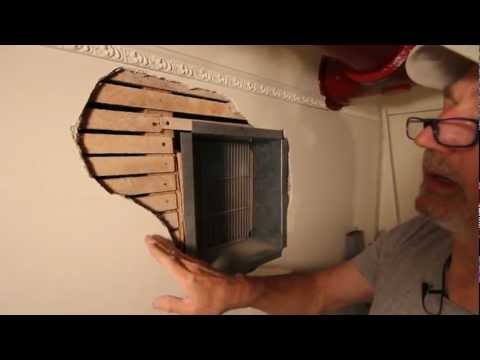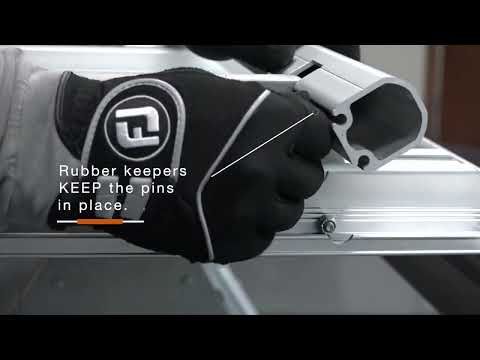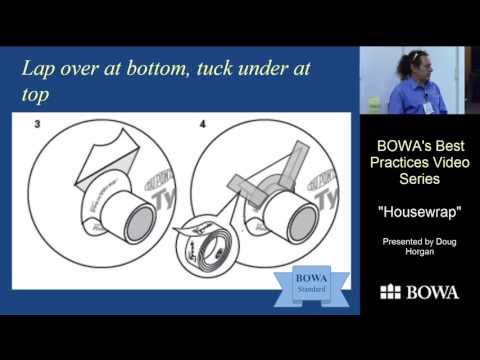Replacing a toilet is a task most remodelers will have to do much more than they want to, so get it right the first time
It helps to know a little bit about everything, including plumbing. Here’s a step-by-step look from Danny the Plumber at replacing a one-piece toilet that, if you’ve never done it before, will help you get through it without making a mess or having to make a bunch of trips to the hardware store. And even if you have done it before, Danny's got some useful tips and tricks that will make for an easier, better-looking job next time.
You never have all of the tools and equipment you’ll need, so here’s a list of what you should bring with you:
- sponge and bucket (to remove water from the tank and bowl)
- rubber gloves (to protect from toilet bowl water)
- wax ring (maybe two)
- toilet bolts (we’re replacing these)
- flex connector (replacing this, too)
- adjustable wrench (for bolting and unbolting)
- large adjustable wrench or slip-joint pliers (just in case)
- utility knife (to pop the bolt caps and break the caulk seal)
- putty knife (to remove the old wax ring)
- paper towels (to dispose of the old wax ring)
- rags, small towels (to catch spills and drips)
- shims (in case the floor is out of level)
- tube of caulk (the hand-squeeze type)
Here we go. [This is an edited version of the video transcript. Italics added for editorial emphasis, based on personal experience.]
Shut off the water
Turn the angle stop clockwise. Check that the water’s off by removing the tank lid and flushing the toilet. If the tank isn’t refilling, you’re good to go.
Empty the tank

You’ll need a sponge and bucket. With the tank lid off, flush the toilet again, if necessary, and hold the flapper open to let most of the water drain out of the tank. If the toilet has a ball float, bend it out of the way (if you’re discarding the toilet) or remove it to get better access to the tank (if you're going to reinstall the toilet somewhere else). Use the sponge to soak up the water, then wring it out into the bucket.
Empty water out of toilet bowl

Wear rubber gloves for this because the bowl water is dirty. If you have a plunger, you can use it to force some of the bowl water to drain. If not, you can use the sponge to do the same thing. Either way, make sure you soak up all the water and wring it out into the bucket.
It’s important to get all of the water out because when you remove the toilet and carry it out of the house, any water left in the tank or tap will leak out and leave a trail on the floor.
Disconnect the flex-connector

This is the water supply hose that goes from the angle stop to the bottom of the tank. Disconnect it from the tank by turning the nut counterclockwise (as you look at it from underneath). It should be just hand-tight, but you might need a wrench or slip-joint pliers to loosen it. You might see a little water drain out, which you can catch by putting a rag on the floor underneath it.
When replacing a toilet it makes sense to put in a new flex-connector, so remove it from the angle stop, too. You’ll need an adjustable wrench to loosen it.
Remove the toilet nuts

There are two of these, one on either side of the toilet base. Remove the nut cover by sliding a utility knife blade under the edge and twisting. The cover should pop right off, exposing the toilet bolt and nut.

Use an adjustable wrench to loosen the nut by turning counter-clockwise. Remove the washers—there are usually two, a metal washer and a plastic one, which holds the cover on.
Break the caulk seal at the floor

Use a utility knife blade to score the caulk all around the base of the toilet where it meets the floor. This will break the seal between the toilet and the flooring. If you don’t do this, it will be much harder to lift the toilet. To make sure the seal is loose, give the toilet a little rock.
Plug the toilet outlet!

There’s always a little bit of water left in the trap, which is cast into the base of the toilet. To keep this water from leaking onto the floor as you carry the toilet through the house, tilt the toilet onto its side about 45 degrees, and stuff a large rag or small towel tightly into the drain hole on the bottom of the toilet. Stuff it in there real good so it prevents water from dripping out.
Carry the toilet out of the house
Get someone to help if necessary.
Remove the old wax ring

The wax seal is what prevents water from leaking onto the flow as it moves from the toilet into the waste pipe. Wax rings are very sticky, and it's easy to make a mess that's hard to clean up, so have some paper towels ready to wrap it with after you’ve removed it.
To remove the wax ring, slip a putty knife under the edge and gently twist. The ring should slowly lift up from the floor; if it doesn’t you may need to slide the knife under it in a couple of places. Don’t touch the ring with your hands, instead use the putty knife to lift it up and set it down on the paper towels. Toss the old wax ring into a trash bag so that it's out of harm's way.
Clean the floor
Use the putty knife to remove the bulk of any wax that remains on the floor, then clean off the putty knife (otherwise, you’ll get wax all over). Also remove the caulk footprint left on the floor from the old toilet. A razor blade works well on tile; for sheet flooring use a clean putty knife. It’s important to remove the caulk because the new toilet will probably have a different footprint.
Remove the old toilet bolts

Sometimes the old bolts can be reused, but it’s best to replace them if possible. Loosen the nuts by turning counterclockwise until the bolt is loose, then slide it outward along the slot in the flange until it comes out.
Install new toilet bolts

Prep each bolt by sliding the washer on and screwing the nut down to within about a inch of the bottom.

Align the wings on the bottom of the bolt so that when they slide into the flange, they catch on either side of the slot. Make sure the bolt stays aligned this way when you tighten it down, otherwise it may pull out when you tighten down the toilet.
In the toilet bolt package is another set of washers and bolts. Hang on to those because you may need them later.
Install the new wax ring


The toilet flange determines how thick the new wax ring needs to be. If the flange is flush with the finish floor, a regular ring will usually work. But if it’s below the level of the floor, you’ll need a thicker ring. If you can’t get one that’s extra-thick, you can use two wax rings, one on top of the other. Any extra wax will squish out on the sides, but it will stay within the toilet footprint. That’s better than a ring that’s not tall enough because then water will leak onto the floor around the base.
Install the flex connector at the angle stop

Before the new toilet gets in the way, attach the new flex connector to the angle stop. Get it hand tight, then give it a quarter turn with a wrench. That’s all you need.
Place the new toilet on the bolts

Straddle the toilet, holding it with yours hands gripping either side of the bowl, and line up the holes in the base over the new toilet bolts. It helps to locate the bolt on one side first, then look over to the other side to find the second bolt. As you lower the toilet over bolts you should feel the wax compressing. If you can’t feel that, it means you need a thicker wax ring.
Align the toilet
Before totally compressing the wax ring and bolting the toilet down, make sure it’s aligned with the wall behind it. You can stand in front of it and line it up by eye, but another way to check is to make sure the distance from the wall on either side of the back of the toilet is the same.
Bolt the toilet to the floor

The toilet comes with new caps and plastic washers to hold the caps in place. First slip the plastic washer over the toilet bolt (it should be marked “This side up”), then the flat washer, and finally thread the nut on. Get both sides hand tight, then use an adjustable wrench to start tightening. If the floor isn’t level, you may need to slide a wedge under the base in a couple of places.
It’s important to tighten the bolts evenly, alternating between tightening one side a little, then the other, then back. Don’t over-tighten because the china will crack and you’ll have to start all over again ... with a new toilet.
Install the cover caps
First check the bolts because they are usually too long for the caps to fit over them. If that's the case use a hacksaw to cut them down, being careful not to scratch the china. To install a cap, align it over the bolt and plastic washer, and give it a firm punch with your fist so that you hear a click.
Fasten the flex connector to the tank

Don't forget to do this before you turn the water back on. The first half of the connector is already installed, so you just need to thread the nut onto the nut on the underside of the tank. The connection will leak if you cross-thread it, so be careful. Hand tight should be enough; if you’re worried about it, give it a quarter turn with a wrench.
Check inside the tank

The toilet tank sometimes has packing material that keeps the interior parts from moving around during shipping. Before you turn on the water, make sure to remove any packing material. If you forget to do this, the tank won't flush properly.
Turn on the water and check for leaks
Turn the angle stop back on, and as the toilet is filling look for leaks at the top and bottom of the flex connector. After it’s finished filling, flush the toilet and check for leaks at the floor. Give it a second flush to make sure, then put the cover on the tank.
Install the toilet seat
The video shows installation of a Toto self-closing seat. Different toilet seats will have slightly different hardware and should come with directions. If the seat uses bolts that have an exposed nut underneath, be careful not to over-tighten.]
Caulk the toilet at the floor


Cut a small piece off the end of the caulk tube at a 45-degree angle. Make sure the area around the base of the toilet is clean and dry. Start at the back, which is hardest to reach. Squeeze some caulk out behind the toilet as far as you can reach, then work it around the base using your finger. Wipe your finger frequently on a damp sponge to remove excess caulk.


Once you've worked around to the side of the toilet, apply caulk in short sections – 4 to 6 inches long – and again smooth the caulk with multiple passes of your finger, wiping off the excess on the sponge after each pass. Doing it this way, pushes the caulk into the joint, which makes for a better seal. It also leaves a nice straight line on the floor.
You may have to rinse the sponge part way through to wash off excess caulk.
This “Danny the Plumber” video is one of dozens of how-to plumbing videos at How2Plumb.com and the How2Plumb YouTube channel.











